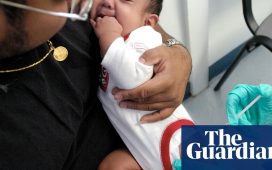Women who are low-income, socially isolated and lack health insurance are far less likely to be up-to-date on mammograms, a breast cancer screening tool experts said is critical to reducing breast cancer deaths, according to a new report from the Centers for Disease Control and Prevention (CDC).
Breast cancer is one of the most common types of cancer to afflict American women, and kills an estimated 40,000 Americans each year. Cancer overall kills 605,000 Americans a year and is the second-leading cause of death, a toll the Biden administration aims to reduce through a Cancer Moonshot initiative.
“The bottom line is women are more likely to get life-saving mammograms when their social needs are met,” said Dr Jacqueline Miller, medical director of CDC’s National Breast and Cervical Cancer Early Detection Program, and one of the study’s lead authors.
The study analyzed data from the 2022 Behavioral Risk Factor Surveillance System, a landline and cellphone survey of the civilian population older than 18. As part of the survey, women older than 40 were asked if they had ever had a mammogram, and if so, when their last test was. Doctors recommend women should get a mammogram every year from ages 45 to 54, and every two years thereafter.
Researchers found that fewer women got mammograms when they experienced other social deprivations, such as a lack of health insurance, reduced hours at work or layoffs, feeling socially isolated and lack of transportation, and when medical care was costly.
Women who experienced more than three kinds of social need had worse mammogram rates, with dramatic state-to-state differences. Only 44% of women in Wyoming who experienced more than three kinds of social deprivation had a recent mammogram, compared with 78% in Rhode Island.
Notably, Black women reported getting more mammograms overall. The result is surprising, because while Black women and white women are diagnosed with breast cancer at roughly the same rate, Black women are 40% more likely to die of the disease. Because the survey is self-reported, Miller said the study may be susceptible to over- or under-reporting.
Although health disparities between demographics are multifactorial, disparities between Black and white Americans across a wide spectrum of health measures are believed to be the result of systemic racism.
after newsletter promotion
Researchers said if the US hopes to reduce the burden of breast cancer deaths, it needs to ensure women are connected to social services – including reliable transportation, low-cost mammograms through local health departments and healthcare even when they do not have health insurance.








